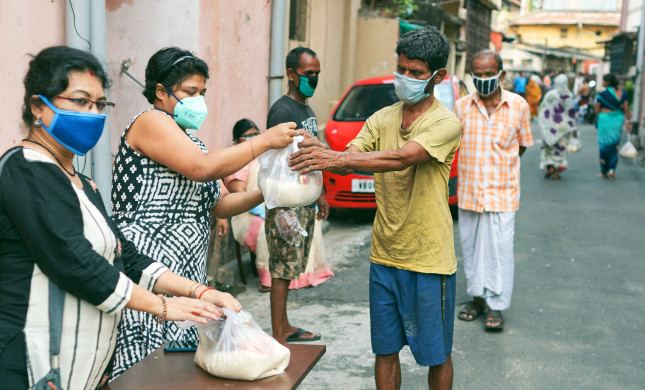-
Food as a Pathway to Peace: COVID, Climate, and the Hunger-Conflict Nexus
September 28, 2021 By Shruti Samala
“We produce more than enough food for the world’s population, but more and more people have been growing hungry in recent years,” said Kelly McFarland, Director of Programs and Research at the Institute for the Study of Diplomacy (ISD) at Georgetown University, during a panel discussion on COVID, Conflict, and Climate co-hosted by ISD and the Stimson Center’s Global Governance, Justice & Security, and Food Security Programs.
Food insecurity, as outlined in the 2021 ISD report, Peace Through Food: Ending the Hunger-Instability Nexus, cuts across multiple crises the world is facing today, including COVID-19 and climate change. In 2020 alone, the number of food insecure people increased by an estimated 318 million people, a rise driven largely by breakdown of supply chains and resulting food price hikes during the pandemic, said McFarland. Moreover, conflict and food insecurity often transpire in a vicious feedback loop, with conflict leading to increased food deprivation, which then fuels further conflict over depleted resources. Predictions show that climate impacts, like extreme weather, frequent flooding and drought, and changing precipitation patterns, will likely trigger a dramatic uptick in global hunger numbers, as well.
Addressing the food crisis requires first a shift in normative frameworks that reorient food security as a basic human right. There has been some progress on this end, said Chase Sova, Senior Director of Public Policy and Research at the World Food Program USA—notably, the UN Security Council’s adoption of Resolution 2417 in 2018, which expressly condemns unlawful denial of access to food in conflict zones and identifies this method of warfare as grounds for collective action.
Beyond recalibrating existing frames of reference, the international community needs to undergo a “wholesale rethink” of global food systems, said Rod Schoonover, head of the Ecological Security Program at the Council on Strategic Risks. This restructuring should extend to national security. “We need to accelerate [towards] a national security 3.0, if you will,” said Schoonover, “where actorless threats such as those posed by climate change, ecological disruption including those involving food, and pandemic risk are fully addressed.”
To this end, policy interventions should occur at all system levels, said Adriana Abdenur, Co-Founder and Executive Director of Plataforma CIPÓ; this includes at the interface of national and local systems—where hunger is experienced most acutely—as well as private and public sectors. Devry Vorwerk, Founder and CEO of DevryBV Sustainable Strategies, said that companies need to play a larger role in tackling the hunger-instability nexus, as they have the technical know-how and organizational wherewithal to cover gaps in global distribution and access to nutritional food.
Food is a basic element of life and of dignity, said Ambassador Barbara Bodine in her concluding remarks. Food insecurity is “the most complex, converging, compounding risk.” It is time we treat it as such.
Read More:
- Who’s Responsible for Feeding Hungry People
- Are We Headed Toward “Recurring Storms” of Global Food Insecurity?
- Harvesting Peace: Food Security, Conflict, and Cooperation
Sources: Georgetown University and Stimson Center.
Photo Credit: Civic volunteers of a social welfare association giving out grocery items like rice, pulses, etc. during lockdown period in Kolkata, India, courtesy of suprabhat/Shutterstock.com.
 A Publication of the Stimson Center.
A Publication of the Stimson Center.



